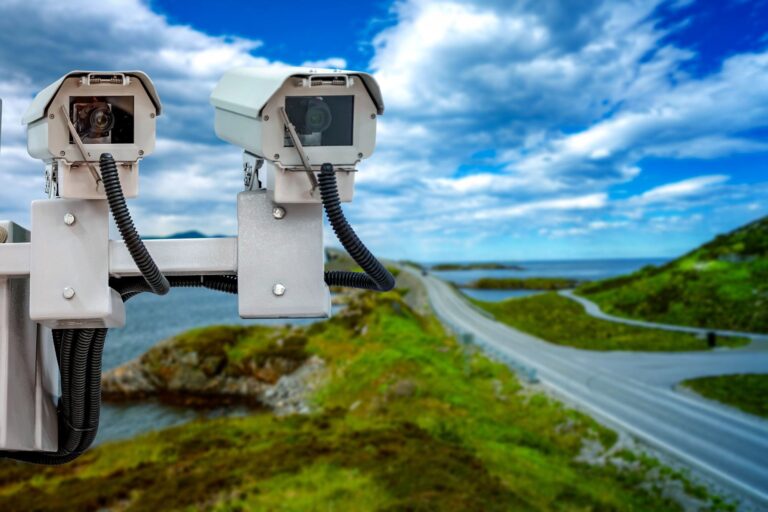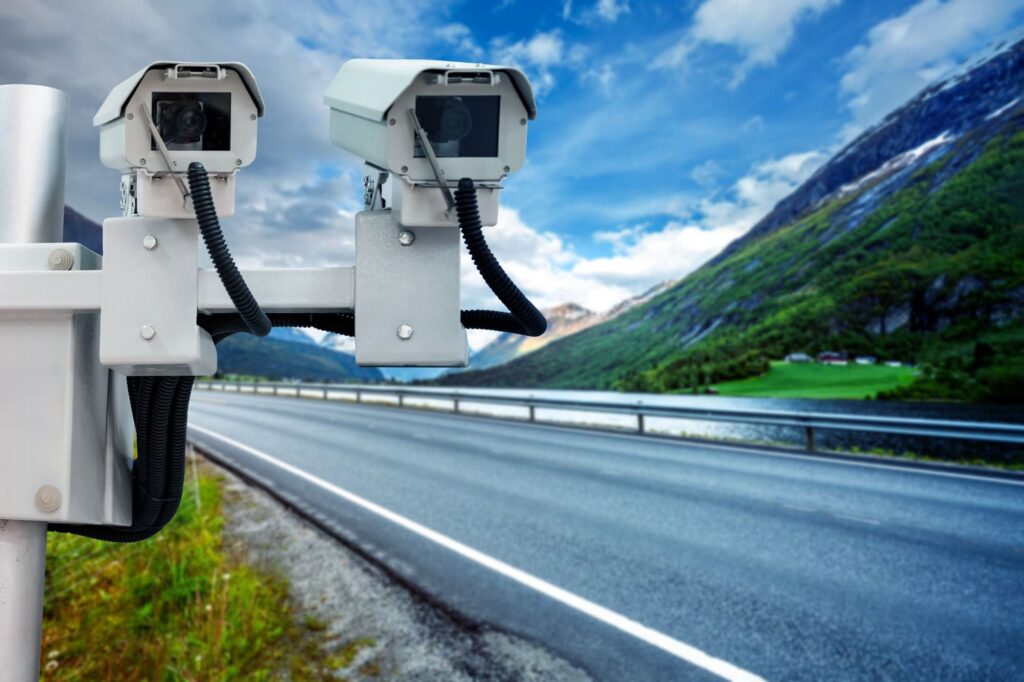Ever wondered, “How far can these sneaky speeding cameras see?” Well, hold onto your hats, folks! We’re here to demystify these tech marvels. Essentially, speeding cameras are eagle-eyed traffic cops, always on duty. They’re snappin’ pics when you’re going too fast!
Now, why should you care? Well, it’s not just about dodging tickets. It’s about understanding the game. Plus, it’s key in balancing safety and privacy. So, let’s dive into the nitty-gritty.
By the way, we’ve cooked up a treat in this blog. We’ll be spilling the beans on the range of these cameras and more! Oh, and you’ll find out how technology is shaking things up on our roads. Sounds juicy, right? So, stick around. You’re in for a thrilling ride. Buckle up, and let’s hit the road!
Table of Contents
Demystifying the Watchful Eye: Speed Cameras Unveiled
Ever thought about the tech behind the snap-happy speed cameras? Two main actors steal the show: radar and lidar cameras. Radar cameras, oldies but goodies, use radio waves to measure your speed. Now, Lidar cameras, the new kids on the block, use lasers, and they’re as accurate as a Swiss watch!
Moving on, we’ve got different types of speed cameras, each with its own tricks. Fixed speed cameras are like silent sentinels, always on watch at the same spot. Mobile speed cameras are a different kettle of fish. They can pop up anywhere, in vans, on tripods, you name it! Now, average speed cameras, these sneaky devils calculate your speed over a stretch of road, not just one spot.
You’re probably asking, “How do these gadgets work?” Well, they’re not as mysterious as you’d think. Essentially, they’re always on the prowl, scanning the roads. When a speedster zips past, they spring into action. Using radar or lidar tech, they calculate the speed in a jiffy. If you’re too fast, snap! They take a picture of your vehicle, capturing the license plate and even the driver sometimes! Then, before you know it, you’ve got a ticket in the mail.
So, that’s the lowdown on speed cameras. Pretty amazing. Understanding how they work can help us be better, safer drivers. After all, knowledge is power, folks!
Factors Affecting the Range of Speed Cameras:
Let’s spill the beans on what affects the range of our friend, the speed camera. First up, we’ve got weather conditions. Picture this: it’s raining cats and dogs. The camera’s view? More clear than a bell. Fog, rain, snow – they can all put a damper on the camera’s range.
Next on the list is the camera’s placement and orientation. But where the camera is perched and the direction it’s facing make a huge difference. Is a camera hidden behind a tree? More effective. One pointed at an angle? Its range can take a hit.

Now, let’s talk about vehicle size and speed. Bigger vehicles like trucks, they’re easier to spot. Smaller ones, like bikes, can slip under the radar. And speed? The faster you go, the sooner you’ll be in the camera’s sights!
Last but not least is the type of camera technology. Remember the radar and lidar cameras we chatted about? They’ve got different ranges. Lidar can clock you from farther away, but radar, while it can’t see as far, it’s less affected by the weather.
So, there you have it. The reach of a speed camera is flexible. It sways like a palm tree in the wind, depending on these factors. Keep this in mind next time you hit the road. It saves you a ticket!
The Long Arm of the Lens: Theoretical vs Practical Ranges of Speed Cameras
So, we’re back at it, tackling the burning question: “How far can speed cameras see?” Let’s break it down by camera type.
Starting with radar cameras, on paper, they’ve got a pretty impressive range. We’re talking about over a mile! But hold your horses! In real life, it’s usually a lot less. Think closer to 300 yards. That’s because all those factors we chatted about earlier can muddle the waters.
Now, let’s hop over to lidar cameras. These whizz kids use lasers; theoretically, they can catch you from a mile away, too. But, again, real life could be more neat and tidy. Practically speaking, their reach is often less, around 1000 feet or so.
Lastly, we’ve got our sneaky average speed cameras. These guys are in a league of their own. They don’t just watch one spot. They track your speed over a stretch of road. Theoretically, their range is as long as that stretch of road. But in practice? It’s usually around a couple of miles.
So, the moral of the story? The theoretical range is all well and good, but the real world isn’t a lab. The practical range is what counts when you’re out and about on the road. Keep this in mind, and drive safely, folks!
How Speed Cameras Detect and Measure Speed:
They have ever had a head-scratching moment wondering how speed cameras clock your speed? Let’s dive right in! It’s a two-step dance. First, detection, then speed calculation. These cameras, they’re always on the lookout, like hawks scanning for a meal. The moment they spot a speedster, they spring into action. Radar or lidar tech measures the speed faster than a New York minute!
Now, how accurate are these cameras? Surprisingly, pretty accurate! Designers craft them to be as accurate as a surgeon’s scalpel. But, just like in life, there’s always a bit of wiggle room. We’re talking about a margin of error, usually around 2 mph.
But hold on. It could be smoother sailing. There are factors that can throw a wrench in the works. Remember the weather? Poor conditions can fog up the camera’s lens, impacting accuracy. Camera placement and vehicle size matter too. A camera pointing at an angle might not get a precise read. And bigger vehicles they’re easier to clock accurately than smaller ones.
Lastly, the type of camera can play a role too. Despite being the new kid on the block, Lidar tech is more accurate than its older cousin, the radar camera.
So there you have it! Speed cameras are more mysterious than they seem. They’re just doing their job, helping keep the roads safe. So next time you see that flash, you’ll know exactly what’s going down. Stay safe, folks!

Legal Implications and Controversies:
Think speed cameras are the same everywhere? Think again! Laws around them change as much as the weather! In some areas, they’re as common as pigeons in a park. In others, they’re as rare as hen’s teeth. Some regions even question their legality, calling them “automated cash cows.” It’s a real mixed bag!
Moving on, there’s no shortage of controversies surrounding these cameras. On the one hand, they’re touted as road safety champions. On the other, they’re called privacy invaders and revenue generators. People ask, “Are they really about safety or just about filling city coffers?” It’s a debate that’s hotter than a summer barbecue!
But, despite the controversies, let’s remember the role of speed cameras in traffic safety. Love them or hate them. Stats show they do help slow us down. They’re like a constant reminder, saying, “Easy there, speed demon! Safety first!” After all, that’s the end goal—safer roads for everyone.
So, that’s the scoop on the legal implications and controversies surrounding speed cameras. It’s a complex world, but understanding it can help us navigate the roads better. So, keep your eyes on the road, and the speedometer, folks! Stay safe!
Tips to Stay Within the Speed Limit:
We are ever wondered how to stay on the right side of speed cameras? Well, buckle up! Sticking to the limit isn’t just about dodging fines or flashes. It’s a golden ticket to safer roads, less stress, and a happy wallet from saved fuel costs!
Now, in this tech-savvy world, why not let gadgets lend a hand? We’re talking about speedometer apps, GPS alerts, and even in-built car tech like adaptive cruise control. These clever tools keep a sharp eye on your speed, helping you stay within the ‘camera-friendly’ zone.
But don’t let tech steal the whole show. Good ol’ driving habits are just as crucial. Keep an eagle eye on road signs. They’re your first clue to speed limits. Keep a good gap between you and the car ahead so you don’t have to hit the gas unnecessarily. And remember, treat the accelerator like you would a raw egg – gently does it!
So, keep these tips up your sleeve next time you hit the road. They’re your secret weapon against those ever-watchful speed cameras. Let’s make safe driving a habit, not an exception, folks!

Putting the Brakes on Our Journey: Wrapping up on Speed Cameras
So, that’s a wrap on our deep dive into how far speed cameras can see! We’ve tackled everything from the nitty-gritty of camera tech to factors affecting their range and even stirred the pot with some legal controversies. And let’s remember those handy-dandy tips to stay within the limit!
Now, we can all agree that speed cameras, as much as they ruffle our feathers, do have a role to play in road safety. So, let’s take the high road and embrace good driving habits. After all, safe driving isn’t just about steering clear of tickets. It’s about keeping us all safe and sound on the roads.
In the end, it’s about something other than how far a camera can see. It’s about how we choose to drive within that range. So, let’s turn a new leaf, folks! The road ahead is as safe as we make it. Remember, speed may give you a thrill, but safety brings you home. Stay safe out there!
Frequently Asked Questions:
A1: There’s no one-size-fits-all answer. It varies based on camera type and other factors. Generally speaking, they can see about 500-1000 meters away.
A2: Indeed, they do! Bad weather, such as thick fog or pelting rain, can put a damper on a camera’s vision. So, it’s only sometimes sunshine and rainbows for them!
A3: Absolutely! Larger vehicles are easier for cameras to detect and measure. Think of them as the ‘big fish’ in the speed camera sea.
A4: You bet! Tech like cruise control, GPS speed alerts, and speedometer apps can be a real game-changer. They’re like your co-pilot for speed!
A5: While they’re designed for precision, they’re not infallible. Factors like camera placement, weather, and vehicle size can affect accuracy.
A6: Without a doubt! Lidar cameras typically have a shorter range but greater accuracy than their radar counterparts. It’s a trade-off!
A7: Keep an eye on the road signs, use tech aids, and, most importantly, adopt safe driving habits. Remember, it’s about safety, not just avoiding a ticket!





